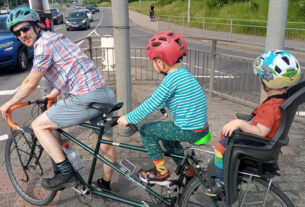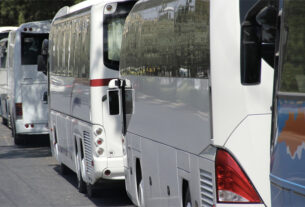I open with a confession: I am not a cyclist, or at least I don’t think I am.
In Dutch terms I am definitely a fietster, not a wielrenner. I cycle for transport, not sport.
In fact, until about four years ago, I hadn’t been on a bicycle for nearly two decades.
It’s clear that we need to change the way we travel. 70% of air pollution comes from motor vehicles. Cars dominate and choke our streets, making them dangerous, unpleasant places to be.
Research into low, medium and high car-traffic neighbourhoods shows that areas with fewer car journeys have stronger communities, as well as improved air quality.
As a Labour politician I also see this as a social justice issue: in the UK the most affluent 20% drive three and a half times more than the least well off 20%, but it is deprived communities that have the poorest air quality.
It’s not even just about income: people with disabilities are five times more likely to be injured by a car per kilometre walked than the able-bodied.
I am a member of the Labour Cycles Campaign Group. We believe that reducing car use and enabling active travel is vital if we are to avert climate disaster and build neighbourhoods designed for people, not vehicles.
We see cycling as a crucial means to an end, not an end in itself. Our aim is active travel for the many, not just the brave. But how do we achieve that?
How do we get people to switch from driving to walking and cycling? I ask this question a lot, particularly of women, who are currently less likely to cycle than men, and the same concern comes up again and again: safety.
They feel safe in their cars: their ‘carcoons’ as Dr Rachel Aldred, Reader in Transport at the University of Westminster, describes them.
Over and over again, women tell me that sharing space with cars is too dangerous, that even when cycle lanes exist, a painted line on the road is no guarantee of safety.
I was one of those women. Even now, I am extremely risk-averse on two wheels and plan new routes based around the safest options, not the fastest.
This is why I am so passionate about good infrastructure. I never even contemplated cycling from Caversham into Reading before Christchurch Bridge was built.
I didn’t even own a bicycle before that route became available. Good infrastructure costs money of course, and historically there has been precious little of that for active travel.
The House of Commons Transport Committee’s recent report on increasing levels of walking and cycling in England might change that if the government can focus on anything other than Brexit for a while.
I am working with Council officers on our Local Cycling and Walking Infrastructure Plan, and the Transport Strategy Consultation takes it as read that we cannot continue as we are and motor vehicle use in Reading must be reduced.
So if and when central funding pots become available, I believe we will be in a strong position to bid for them. In the meantime I shall continue to call for active travel to be prioritised in Reading, challenge developers to prioritise active travel modes and argue for developers’ contributions to be spent on cycling and walking schemes.
Every new crossing, improved junction, and section of physically segregated infrastructure will contribute to safer cycling routes and get more people out of four wheels and on to two.
Adele Barnett-Ward (Councillor)


